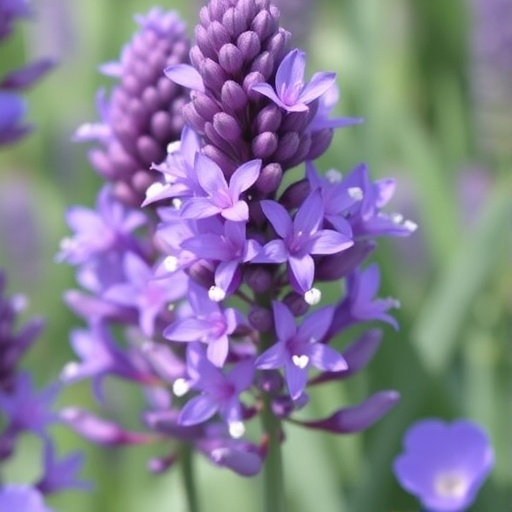In a groundbreaking study, researchers have unveiled the potential of utilizing essential oils derived from Artemisia in combination with beta-cyclodextrin for the effective control of the mosquito species Culex pipiens. This research is significant, not only for its implications in pest control but also for the broader understanding of using natural compounds in managing vector-borne diseases. The pressing challenge of controlling mosquito populations, particularly in urban and suburban environments, makes this study timely and relevant. Given the global rise in vector-related diseases, innovative strategies are essential for public health.
The innovative approach of combining Artemisia essential oils with beta-cyclodextrin showcases a remarkable advancement in formulating insecticides that are both effective and environmentally friendly. The Artemisia genus, known for its various beneficial properties, has gained attention for its insecticidal potential. This study honed in on Culex pipiens, a major vector for diseases like West Nile virus and lymphatic filariasis, thereby underlining the importance of effective control strategies. Understanding the insecticidal properties of essential oils, paired with advanced formulation techniques, opens new avenues for developing more sustainable pest control methods.
Essential oils extracted from Artemisia species exhibit a complex biochemical profile that contributes to their insecticidal activity. Researchers have identified various phytochemicals within these oils, each possessing unique modes of action against pests. The study’s in vitro analysis indicates that specific compounds interact with the mosquito’s biological systems, leading to increased mortality rates. These findings suggest that the essential oils hold the potential to disrupt the normal bodily functions of Culex pipiens, paving the way for creating novel insecticides.
Moreover, the incorporation of beta-cyclodextrin into the formulation plays a crucial role. Beta-cyclodextrin, known for its ability to form inclusion complexes with various organic compounds, enhances the solubility and stability of essential oils. This synergy not only amplifies the insecticidal effects but also mitigates the volatility of the essential oils, ensuring prolonged efficacy. The study presents compelling evidence that this formulation approach could revolutionize how we approach mosquito control, particularly in integrated pest management systems.
The researchers conducted extensive in silico analyses, utilizing advanced computational modeling techniques to predict the interaction between essential oil compounds and mosquito target sites. This cutting-edge approach provides a deeper understanding of the molecular mechanisms at play, which could lead to targeted strategies that maximize the effectiveness of the insecticide while minimizing potential side effects. By predicting the outcomes of different formulations, the researchers can systematically experiment with varying concentrations and combinations of compounds, creating the most potent insecticidal products.
As urbanization continues to expand globally, the incidence of diseases spread by Culex pipiens becomes more prevalent. Traditional insecticides often come with environmental and health-related concerns, leading to an urgent need for alternative solutions. The adoption of plant-based insecticides, especially ones derived from Artemisia, represents a promising shift towards sustainable agriculture and health practices. This research not only addresses the immediate need for effective pest control but also aligns with broader trends toward eco-friendliness in agriculture.
The implications of this study extend beyond just mosquito control. The versatility of essential oils implies potential applications in various agricultural practices, creating a multifunctional approach to pest management. As this research progresses, there may be opportunities to explore the benefits of other plant-derived compounds, further enriching the toolkit available for farmers and public health officials alike.
Additionally, the study emphasizes the importance of interdisciplinary collaboration in addressing complex societal challenges. The integration of entomology, chemistry, and computational modeling illustrates how diverse scientific fields can converge to produce substantial real-world outcomes. This collaborative spirit is essential as researchers continue to tackle pressing issues like vector-borne diseases and pesticide resistance.
The exploration of Artemisia essential oils is just the beginning. Future research may delve deeper into optimizing formulation processes, exploring different carrier substances, or even identifying other plant species that can complement this approach. The ongoing efforts to refine natural insecticides could lead to a range of products tailored to address specific pest problems, enhancing their viability across different environments and conditions.
Furthermore, consumer acceptance of natural alternatives to synthetic insecticides will significantly influence the success of such innovations. Educational initiatives aimed at raising awareness of the efficacy and safety of natural insecticides can play a critical role in fostering a shift in agricultural and pest management practices. As research continues, collaboration with agricultural stakeholders and regulatory bodies will be essential to ensure the successful implementation of these novel solutions.
In conclusion, the synergistic formulation of Artemisia essential oils with beta-cyclodextrin represents a significant step forward in the quest for sustainable pest management solutions. The findings from this study not only highlight the potential of Artemisia in insecticidal applications but also set a precedent for future research exploring plant-based insecticides. With continued research and careful implementation, this innovative approach could contribute significantly to controlling the prevalence of mosquito-borne diseases, ultimately improving public health outcomes.
As researchers eagerly anticipate further developments in this field, the hope remains that combined efforts in science and industry will yield safe, effective, and environmentally friendly solutions to some of the greatest challenges posed by disease vectors. The ongoing study of plant-based insecticides signifies a promising pathway toward a healthier world.
Subject of Research: Utilization of Artemisia essential oils in pest control
Article Title: Synergistic formulation of Artemisia essential oils in beta-cyclodextrin: in vitro and in silico analysis of insecticidal activity against Culex pipiens
Article References: Alami, A., Ez-zoubi, A., Fadil, M. et al. Synergistic formulation of Artemisia essential oils in beta-cyclodextrin: in vitro and in silico analysis of insecticidal activity against Culex pipiens. Environ Sci Pollut Res (2025). https://doi.org/10.1007/s11356-025-36849-8
Image Credits: AI Generated
DOI: 10.1007/s11356-025-36849-8
Keywords: Artemisia, essential oils, beta-cyclodextrin, insecticidal activity, Culex pipiens, sustainable pest control.




